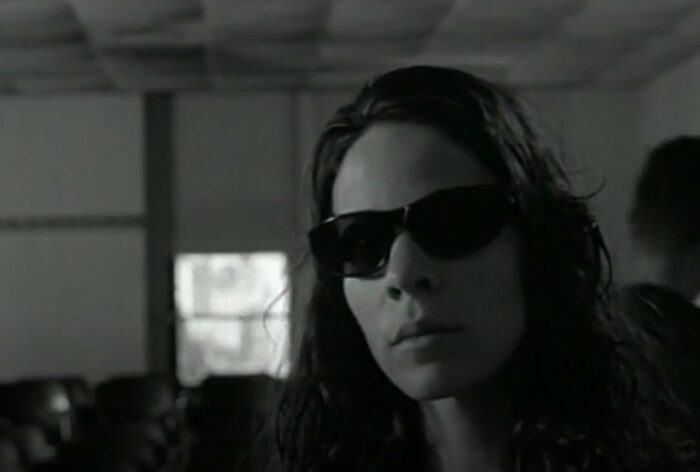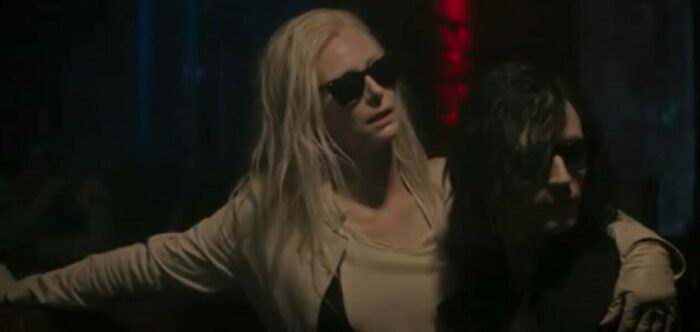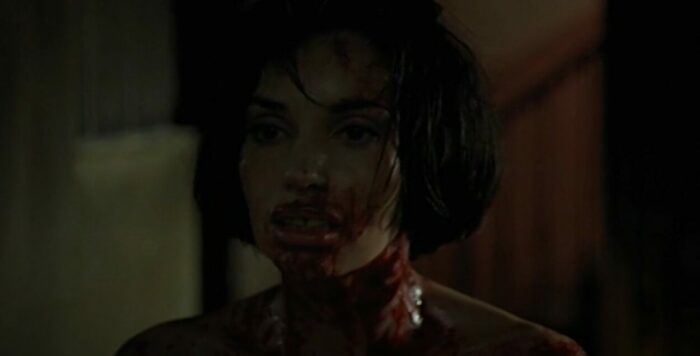No Halloween would be complete without a good vampire film. Whether it is watching old classics like Nosferatu (1922) or Dracula (1931), or more modern versions of the genre such as Nosferatu the Vampyre (1979) or Interview with the Vampire (1994), scary fun is guaranteed. Nosferatu in this case was inspired by Transylvania’s Count Dracula from Bram Stoker’s novel of the same name. However, one even scarier idea for many is that perhaps vampires do not live in some distant past or imaginary castles, but can be found just around the corner, in our present times and in our small towns and cities, biding their time, always looking for potential victims to satisfy their craving. Below are five films that show blood-thirsty fiends in an urban setting.
The Addiction (1995)

Abel Ferrara may be best known for his unflinching portrayals of the life of crime, violence and corruption in such films as King of New York (1990) and Bad Lieutenant (1992), but after these films he also produced black-and-white film The Addiction, where he focused on one rapidly unfolding epidemic of vampirism in central New York. Kathleen Conklin (Lili Taylor) is an aspiring PhD student in existential philosophy when she is attacked on her way home from her studies. As the wound on her neck appears to heal, her inexplicable craving for blood breaks out. With structural and character similarities to Ferrara’s provocative Ms .45 (1981), The Addiction remains one of Ferrara’s most criminally underseen films. It has most of scriptwriter Nicholas St. John and Ferrara’s hallmarks: the lead character’s harrowing downward spiral, sexual undertones and religious references, and can also viewed as a metaphorical representation of the most insidious and frightening aspects of any drug addiction. And, while featuring Ferrara’s usual collaborator Christopher Walken, the film also shines with the committed performance from Lili Taylor (Mystic Pizza (1988)), whose turn from one happy-go-lucky student to a sombre, single-minded blood predator is a sight to behold.
Only Lovers Left Alive (2013)

Jim Jarmusch is one of few directors out there who still makes you rethink cinema. In Only Lovers Left Alive, his pair of urban vampires is Adam (Tom Hiddleston) and Eve (Tilda Swinton) who have been married for centuries, but now have grown apart. As they try to reconnect in Detroit, Adam’s growing disillusionment about his music career and the arrival of Eve’s sister Ava (Mia Wasikowska) threaten their chance of re-discovering happiness, especially since no one as yet put an end to their daily need for pure blood. Jarmusch’s films are always a curious combination of unusual, postmodern philosophy and moody visual displays. Only Lovers Left Alive is no different as its characters try to remain different in an increasingly indifferent world. It is a sluggish, poetic meditation on remaining true to oneself and re-discovering romance in hectic, decaying America. Jarmusch would return to this comedy-horror genre in The Dead Don’t Die (2019), a film about a zombie invasion.
Trouble Every Day (2001)

Claire Denis’s film Trouble Every Day is probably one of her most misunderstood and sexually-charged creations. An entry into the New French Extremity movement, the film tells of couple Shane (Vincent Gallo) and June (Tricia Vessey) who go to Paris for their honeymoon. However, Shane hides a deep secret, and it has something to do with one man he searches—scientist Dr. Semeneau (Alex Descas), whose wife Coré (Béatrice Dalle) seems to have an insatiable appetite for blood. It is easy to be put off by all the “extremity” on screen, but since at the helm of this is still Claire Denis, the film is deeper than first meets the eye, and thanks to Denis’s talent as a filmmaker, each scene is imbued with a thought-provoking mix of intimacy, immediacy and instinctiveness. There are perceivable themes in this “urban vampires” film of existential longing that is never satisfied and curious gender dynamics (the female vampire takes control) as Denis also links vampirism to the expression of sexual desire tinged with primal violence. Trouble Every Day is bold, entrancing, and unflinching.
Martin (1977)

In this film, director George A. Romero (Night of the Living Dead (1968)) introduces Martin (John Amplas), a troubled, lonely young man who starts to prey on women in Pittsburgh and Braddock, Pennsylvania. However, Martin is not one’s ordinary urban vampire. He thinks he thirsts for blood, but the true nature of his horrifying condition and obsession may be sadder, scarier and closer to reality. The film marks the first collaboration between Romero and special effects artist Tom Savini (who would go on to work on such films as Friday the 13th (1980) and Day of the Dead (1985)), and is one terrifying film that not only exposes the mind of one unhinged man on a murderous mission, but also tries to stay true to the cinema’s supernatural tradition. In Martin, vampirism has never felt so human as Romero essentially re-writes the vampire myth to show it being closer to modern delusions and psychopathic tendencies.
A Girl Walks Home Alone At Night (2014)

A Girl Walks Alone at Night is Ana Lily Amirpour’s debut, already showing much promise. It can be viewed as a combination of Ferrara’s The Addiction/Ms .45 (in terms of one lone female wreaking havoc around her) and Jarmusch’s Only Lovers Left Alive (in terms of its pronounced aesthetics and music), and is a genre-defying film that has also been billed as “the first Iranian vampire western”. Shot in black-and-white, the story is about The Girl (Sheila Vand), a vampire, who is on her blood-thirsty mission to attack bad men in one area of Bad City, a grim ghost-town in Iran. There is clear message in this film about empowering women in a patriarchal society, as Amirpour also seemingly draws inspiration from Quentin Tarantino’s cinematic pop culture and David Lynch’s surrealism. Even if not all things work in this debut, the film about an urban vampire still feels singular and, ultimately, strangely compelling.
Looking ahead, one big vampire film to keep an eye on is Robert Eggers’s remake of Nosferatu with Bill Skarsgård in the lead role. The director’s previous films The Witch (2015) and The Lighthouse (2019) were exquisite productions that emphasised dark, brooding atmosphere, and a vampire film is exactly where Eggers’s talent can truly shine next.



